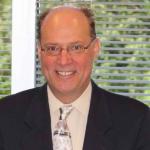President Eisenhower surrounded himself with brilliant academics; he knew that science ended World War II without costing another million American lives. There was a sense that science would soon solve all the world’s problems. But by 1961, he said,
“we must also be alert to the equal and opposite danger that public policy could itself become the captive of a scientific-technological elite.”
He worried that government control over funding would change the nature of the “free university, historically the fountainhead of free ideas and scientific discovery.”
Americans had witnessed the awesome power of science, and they embraced and championed it. And that lasted for the most part until the late 1960s. Then, gradually, people started to distrust science, or maybe it was the scientists. People and organizations began to question everything science created for us. The science that brought us clean energy, affordable food, and medical cures was now under attack, not with proof of any wrongdoing but merely because they came from big corporations.
The American Council on Science and Health was created in 1978 in part to address the growing skepticism. We have always tried to follow “the science,” not defending products, but rather the science used to create those products and show their safety and efficacy.
Skepticism is a necessary good in science. Scientists are human, and humans make mistakes. The skeptics should ask,
- “What was your methodology?” (Is it sound? Did you leave potential variables out?)
- “Where is your data?” Did you cherry-pick the results?
- Did you misinterpret what the result might actually be telling you?
As Italian physicist and author Carlo Rovelli writes in Anaximander,
“In the field of knowledge, the discovery is that allowing free criticism and questioning, granting anyone the right to take part in discussions, and taking all proposals seriously does not result in an inconclusive cacophony. On the contrary, it leads to the rejection of the weak hypotheses and the emergence of the best ideas.”
Skepticism requires a diversity of thought and ideas. I remember my psychology class drumming into my head the dangers of groupthink. And naturally, they used the Bay of Pigs disaster to prove what can happen when everyone thinks the same way.
Eisenhower’s warning rings true today - Taxpayer-funded science has been captured by special interests and groupthink.
Environmental Protection Agency’s Clean Air Scientific Advisory Committee (CASAC)
The EPA was created in 1970. But industry’s work to clean up the air started almost 20 years before the EPA was even created, installing scrubbers in smokestacks and other actions.
CASAC, created in 1977, has an advisory role within the EPA. CASAC examines the EPA’s taxpayer-funded studies to examine air quality and its effect on life. CASAC determines whether a study is relevant enough to set new EPA regulations. CASAC’s board is usually composed of a mix of scientists and other stakeholders from academia, government, and industry backgrounds. The make-up of CASAC has been very balanced and diversified to allow for the greatest amount of input when examining the studies.
For instance, rules governing levels of PM2.5 were established in 1997 and modified slightly in 2013 following a case brought by the Natural Resources Defense Council. Since those regulations went into effect, PM2.5 levels have consistently dropped in the US – satellite images from WHO, NASA, and others show the US has the lowest levels of PM2.5 on the planet, outside of Siberia and Antarctica.
The EPA has wanted to reduce PM2.5 levels even further based on several EPA-funded studies that claim that strangely, “PM2.5 - caused” diseases are rising while PM2.5 levels are down and continuing to drop. I and others have testified several times over the past few years to persuade them that further reductions would create more harm than good.
Fortunately for America and, more importantly for Americans, the EPA has not choked progress with an even heavier hand regarding PM2.5 levels. But that may change. Shortly after the Biden administration took over the EPA, they made an unprecedented move of firing all the CASAC members and replacing them mostly with academics who received tens of millions in EPA grants to study air quality and determine what new regulations the EPA should create.
This flies in the face of the rules at other federal government agencies. The Department of Health and Human Services has rules barring people from serving on the oversight panels from having connections to the agencies they oversee. That makes sense. But at the EPA, the new CASAC members board is composed almost entirely of researchers who have received more than $120 million in taxpayer-funded research grants from the EPA.
One of the “fired” was Dr. Stanley Young. I am proud to say he is a member of ACSH’s Scientific Board of Advisors. They did not say why they let the board members go and shortly after replaced them. Dr. Young believes he was unjustly removed from his position for political purposes. And so last year, he sued the EPA and its Biden-appointed director. The case has just appeared before the US Court of Appeals in the District of Columbia.
When considering those providing oversight, is a person who receives a $10 million grant from the agency more trustworthy than a scientist in an industry subject to the agency’s regulations?
If you want to declare that someone is not trustworthy, you need proof. The removal of Dr. Young and others by the EPA is an opinion and is the basis of Dr. Young’s suit.



